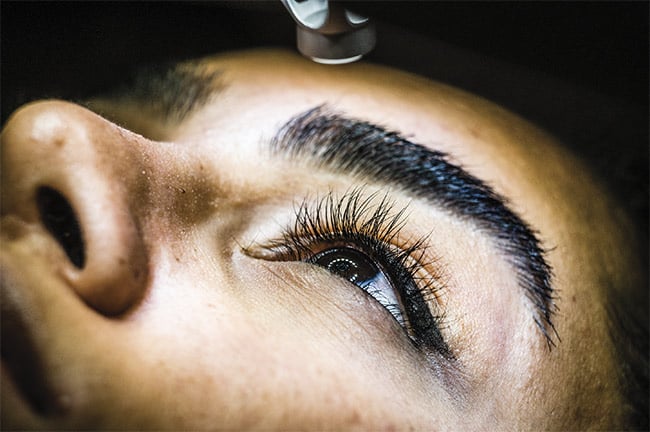A team of scientists at Linköping University and LinkoCare Life Sciences in Sweden may have found an answer to the problem of restoring people’s eyesight — and it’s only skin deep. Porcine skin, that is.
The human cornea is composed primarily of collagen. If an effective way could be found to transplant this material from another source, such as from the skin of humans or animals, the researcher’s wondered, the transplanted tissue could provide a durable replacement for thinning tissue in the eye, while at the same time matching the necessary diffractive characteristics of the cornea. Thanks to an innovative experimental procedure by the team, answering this challenge may be just a pig’s trot away.
Researchers and clinicians have struggled to find the best way to address keratoconus, particularly in low- and middle-income countries such as India and Iran, where the feasibility study was conducted and where many people suffer from corneal blindness and low vision but treatment options are lacking.

A patient’s eyes are examined for signs of keratoconus, or thinning of the cornea. Courtesy of Thor Balkhed/Linköping University.
Keratoconus occurs when the cornea thins and bulges into a cone shape, causing blurred vision and sensitivity to light and glare. According to the Mayo Clinic, in the initial stages of the condition, treatment may involve the use of glasses or contact lenses. Progression of the disease can cause blindness, and a cornea transplant could restore the eyesight of those who suffer from it. In remote areas, however, where the need is greatest, donated human corneas are in short supply, and they must be used within two weeks.
Collagen is a naturally soft substance, so photochemical crosslinking with riboflavin and ultraviolet light can be used to form it into a more durable hydrogel. The researchers implanted tissue that was bioengineered from the collagen in porcine skin — a purified byproduct of the food industry that is already used in plastic reconstructive surgery and other medical protocols — into the corneas of 20 patients, 14 of whom were blind.
“These were consecutive patients waiting for a corneal transplant due to advanced keratoconus,” said Neil Lagali, professor in the Department of Biomedical and Clinical Sciences at Linköping University. “All subjects were contact lens intolerant and were blind or had very low vision.”
The implantation of collagen was first tested in pigs’ eyes, and the animals showed no signs of postoperative pain, irritation, excessive eye watering, or blinking, he said. In the operation, a femtosecond laser was used to incise an area where the tissue was inserted.
“We used the laser to create a pocket within the corneal tissue, without damaging the overlying or underlying native tissue or nerves, thanks to the short pulse duration but high laser intensity of the femtosecond laser,” Lagali said. “That made it possible to use photodisruption to give a very clean and precise cut in the tissue, which preserved its biological properties.”
For the human patients who received the procedure, corneal thickness and curvature were restored, as well as eyesight. No sutures were required afterward, and the patients were given only immunosuppressant drugs over a period of eight weeks, as compared to the months and years of medication that are typically necessary after a full, conventional human cornea transplant. The patients were followed for two years afterward, and the results were tracked using optical coherence tomography images. None were blind at the end of the tracking period.
Perhaps the most promising aspect of the study is that it is possible to store the bioengineered tissue for up to two years, whereas donated human corneas must be used in a matter of days. Broader clinical trials will need to be conducted before the transplant procedure can be made available in health care settings worldwide. The researchers are planning to conduct studies of larger populations in Europe and the U.S.
If the future results prove promising as well, researchers involved in the studies could find themselves squealing with delight. While beauty may be only skin deep, the possibility of using collagen from the skin of animals to restore the eyesight of people worldwide brings hope just as close to the surface.